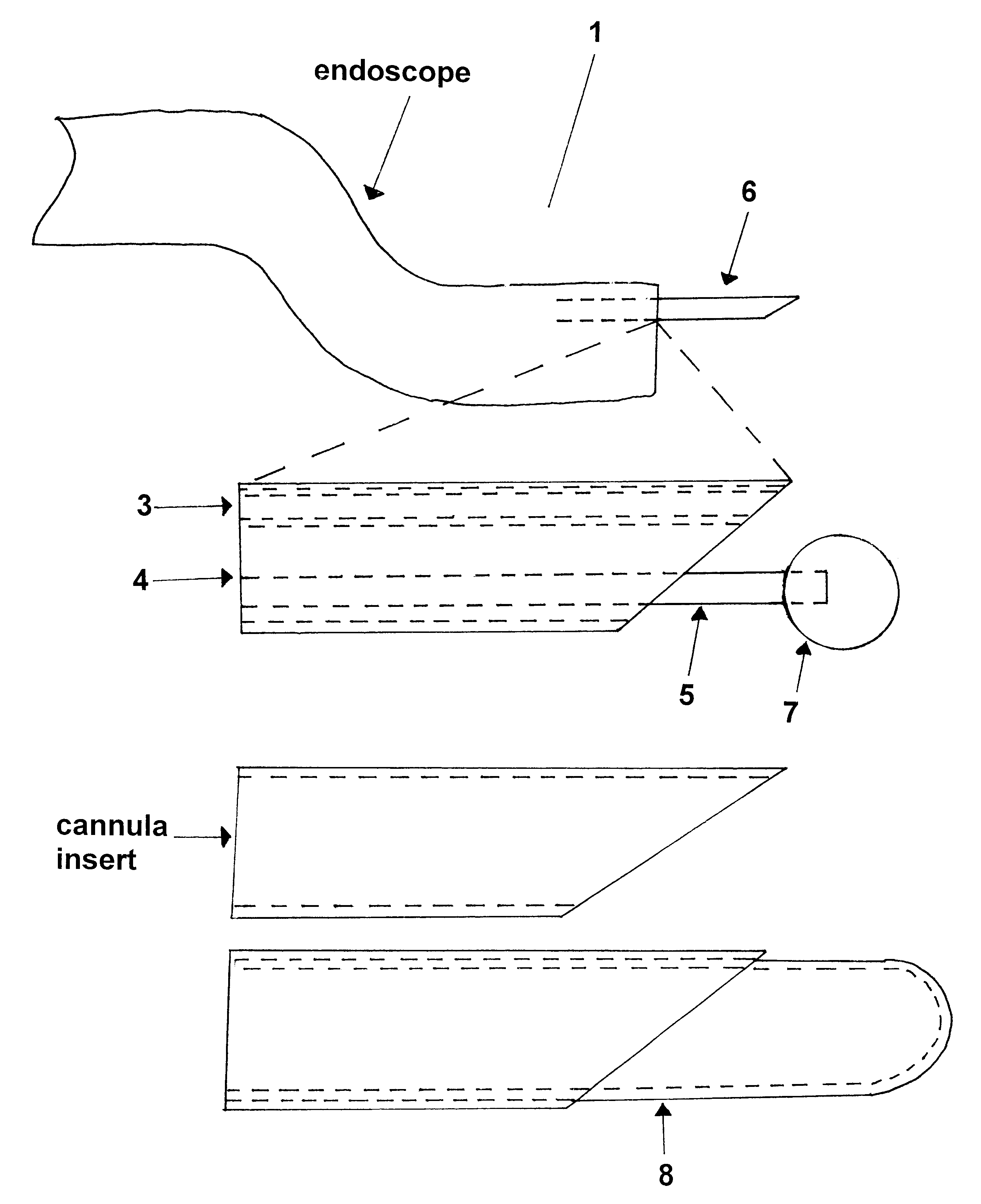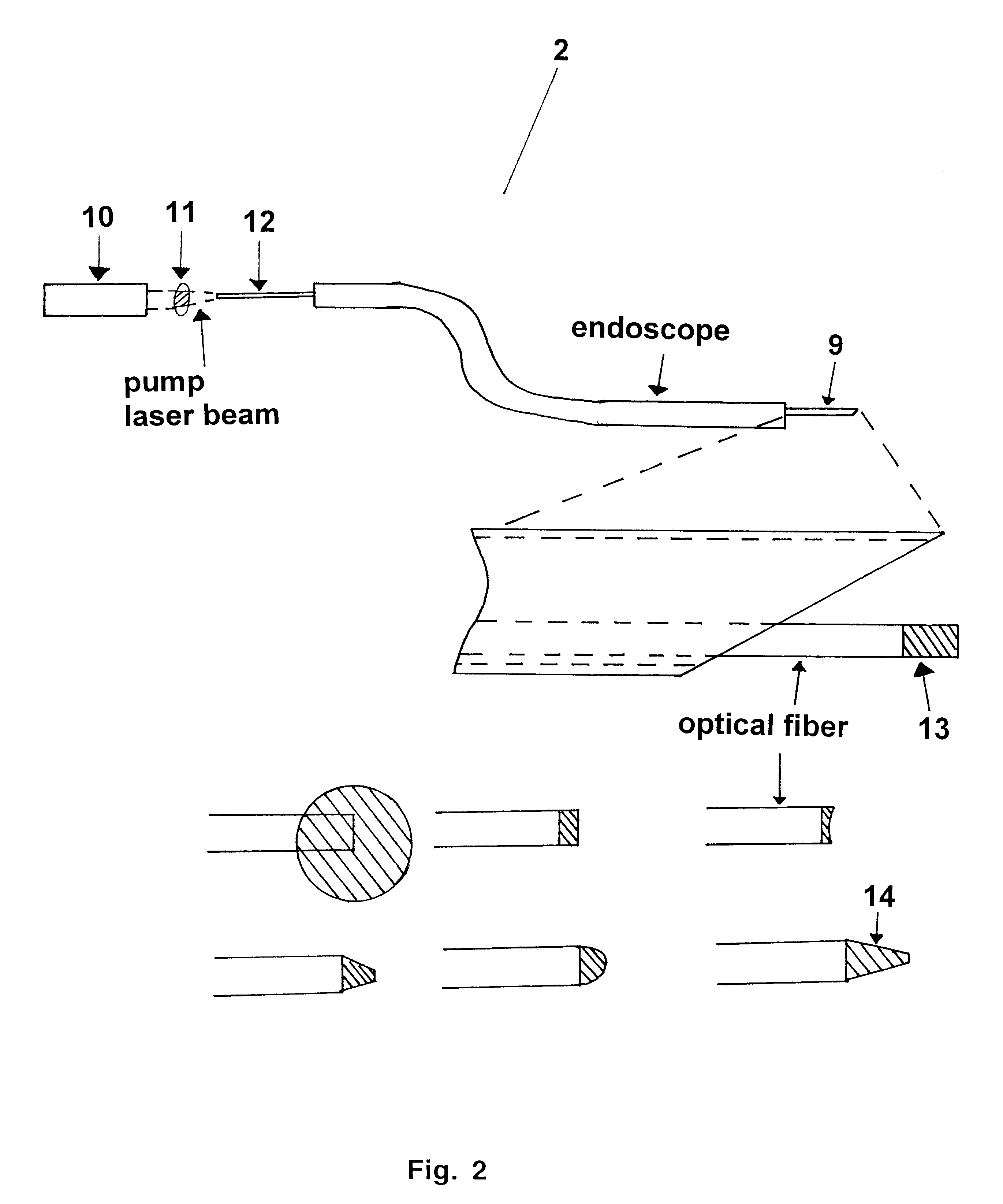Laser probes for drug permeation
a laser probe and drug technology, applied in the field of biomedical physics and drug delivery, can solve the problems of inability to make the device to make the method feasible, inability to localize the delivery of compounds, and increased side effects at specific sites distal to the target tissu
- Summary
- Abstract
- Description
- Claims
- Application Information
AI Technical Summary
Benefits of technology
Problems solved by technology
Method used
Image
Examples
example 2
The epiphyseal plate of the bone is extended through the external cortical layer into the trabeculae or cancellous bone (FIG. 3). Majority of the living cells associated with bones reside in cancellous bone. To maximize the delivery of antibiotic or other pharmaceutical substance to the cancellous bone in osteomyelitis, an optical probe may be placed adjacent to or within the lesion or site of infection and the radiant energy pumped into the lesion. Similar to the tumor catheter, the osteomyelitis catheter is introduced into the cancellous bone via an endoscopic device by first drilling a small hole through the cortical bone with a mechanical drill or laser. Alternatively, the endoscopic device itself may be fitted with a cutting tip that may or may not be retractable following insertion. Once the endoscope is in place, the catheter is advanced into the bone. A pack of biocompatible putty or sealant may be used to affix the catheter in place. As in the case of the tumor...
example 3
Ear Probe
Ear probe is affixed in an occluding earplug. The earplug is made of a compressible material which expands when placed in the external ear canal and holds the probe in place (FIG. 4A). The output of the probe is directional in that the tympanic membrane or eardrum is irradiated. This irradiation directly forces pharmaceutically active substances into the tympanic membrane and / or beyond, depending on the energy and wavelength selected. The foam in the external ear canal can optionally be waterproof so that it holds the pharmaceutical in place between the earplug and the tympanic membrane. The connections to the probe can be run out of the external ear canal and attached to a mobile source of energy, drug and / or radiant energy. In doing so, the patient benefits from being ambulatory. Alternatively, an ear probe may be designed in such a way that the probe is passed up through the pharyngotympanic orifice into the middle ear (FIG. 4B). Such a probe may be used to deliver drugs...
example 4
Rectal Probe
Rectal probe is fixed in a smooth sleeve of appropriate shape so that it can be inserted through the anal sphincter into the rectum (FIG. 5). The probe can be held in place by the anal sphincter and the tightness of the rectum, or by an expandable inflation cuff. The probe provides radiant energy in a cylindrical pattern (FIG. 5A), isotropic geometry (FIG. 5B) or in a circular field created by deflecting the radiant energy laterally for more focal administration of drug (FIG. 5C). Alternatively, the probe is held in place through an arrangement of inflatable balloons arranged coaxial with the fiber optic and drug channel.
Treatment can extend beyond the rectum into the colon or lower intestine. The probe may be encased in an endoscope, or the endoscope, probe and drug delivery channel encased in a catheter type device. The endoscope allows visual inspection of the colon walls for identification of polyps and / or cancerous lesions. These lesions may further be treated throu...
PUM
 Login to View More
Login to View More Abstract
Description
Claims
Application Information
 Login to View More
Login to View More - R&D
- Intellectual Property
- Life Sciences
- Materials
- Tech Scout
- Unparalleled Data Quality
- Higher Quality Content
- 60% Fewer Hallucinations
Browse by: Latest US Patents, China's latest patents, Technical Efficacy Thesaurus, Application Domain, Technology Topic, Popular Technical Reports.
© 2025 PatSnap. All rights reserved.Legal|Privacy policy|Modern Slavery Act Transparency Statement|Sitemap|About US| Contact US: help@patsnap.com



